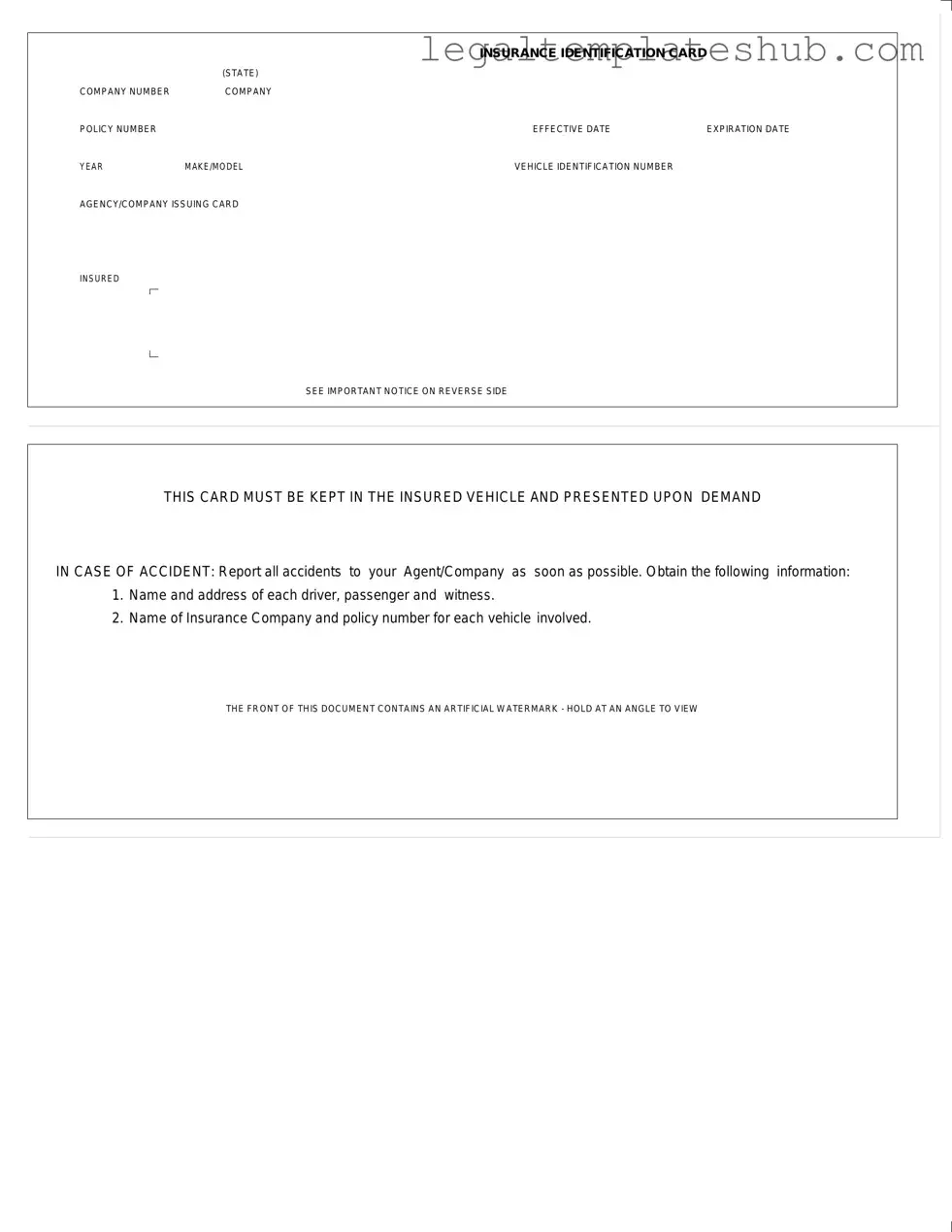Blank Auto Insurance Card PDF Form
An Auto Insurance Card is a document that provides proof of insurance coverage for a vehicle. This card includes essential details such as the insurance company name, policy number, and effective dates. It is important to keep this card in the insured vehicle and present it upon demand in case of an accident.
To ensure you have the necessary information readily available, fill out the Auto Insurance Card form by clicking the button below.
Access Editor
